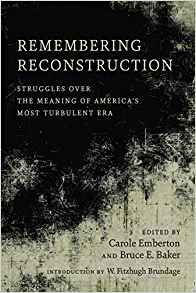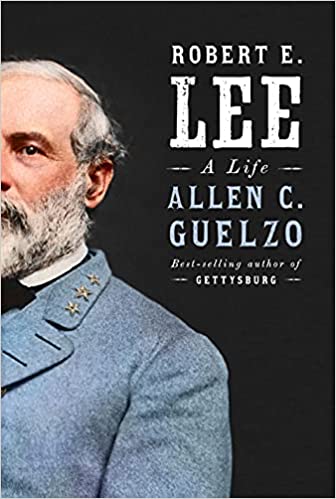Published to great fanfare in 1964, Rehearsals for Reconstruction by Willie Lee Rose has long represented the standard for scholarly works dealing with complex and troubled process of wartime emancipation. As enslaved Black Americans sought their freedom throughout the conflict, a polyglot organization of military officers, politicans, and white reformers attempted to ease the transition to freedom, though their reasons for doing so were often far from progressive. Given its scholarly importance—and the critical nature of its subject—it will come as no surprise that Rose’s work inspired dozens of subsequent monographs. The latest of these is John Cimprich’s incisive study Navigating Liberty: Black Refugees and Antislavery Reformers in the Civil War South.
Cimprich is most interested in the interactions between Black refugees from slavery and the white, northern reformers who moved south during the conflict to aid freedom-seekers. Though focused on providing help to Black people, reformers of all persuasions typically believed that formerly enslaved people were inherently inferior—whether because of their race or because of the education that slavery had denied to them. Cimprich does an admirable job navigating sources that express such racism. As a result, his book is a model for close and a careful primary source work.
Cimprich identifies three strategies favored by reformers, providing a useful taxonomy for scholars to use in thinking about the various paths to freedom enslaved people followed. The first strategy involved a paternalistic approach, emphasizing constant supervision of the transition to freedom. The second strategy was defined by a laissez-faire approach, which aimed to allow newly freed Blacks to direct their own lives and stressed minimal intervention. The laissez-faire reformers believed that Black Americans needed to learn to survive with white aid, though they were not overly sanguine about the inherent abilities of Black people. A final strategy proposed an egalitarian approach, viewing Black people as equals and listening to their concerns. The group of reformers who embraced the third strategy were more diverse, including free Blacks from the North; they advocated for full equality under the law for Black Americans earlier and more ardently than most other reformers.
One of the most commendable elements of Navigating Liberty is its digestibility. The book is broken up into small and readable sections, which help to orient readers as they confront the myriad issues that faced both reformers and refugees. In Chapter 2, for example, Cimprich deals with necessities, and offers sections on food, housing, clothing, and security. Cimprich manages to clearly organize the disparate elements in a way that brings admirable clarity to a process that was, even on its best days, deeply disorganized.
One of the most interesting chapters in Cimprich’s work deals with wage labor. This assumed various forms during the war, from independent labor performed by free Blacks to work that supported free Black communities to military labor. The third category was particularly critical, though it evolved over the course of the conflict with the War Department paying all black laborers after 1863. Black men also offered their labor in the form of military service after 1863, which helped to ease pressure on recruiting efforts across the North, as well as a direct path to citizenship for Black men.
Navigating Liberty also examines the system of contract labor that developed over the course of the war. This type of work was particularly important, Cimprich writes, in the minds of reformers, who knew that formerly enslaved people would need to be integrated into both local and national economic systems. Contract labor did not always create positive outcomes for formerly enslaved people, however, who were paid little for work that often resembled the kinds of tasks they had performed while in slavery. By and large, this meant farming on large plantations for a low wage and, sometimes, room and board. Though Cimprich does not follow the system into the postbellum period, readers could reasonably draw a line from the contract labor systems established by white reformers and the widespread practice of sharecropping that aimed to inhibit economic opportunities for Blacks after the war.
While most of Cimprich’s work focuses on the actions of white reformers, the book does recover Black-led efforts to create community beyond slavery. These efforts were particularly notable when it came to religion and churches, which were a space that white reformers often ceded to newly freed Blacks. Freedom provided Black Americans with a chance to build lasting communities, to reunite with loved ones torn away by slavery, and to demonstrate the persistence of Black culture, despite the efforts of enslavers to crush Black individuality and agency.
Overall, Navigating Liberty gives thorough attention to the most important subjects in the literature on the transition from slavery to freedom—from religion and education to labor and emancipation. One place that Cimprich might have done more to tie this work to current trends in Civil War era scholarship is in examining how Americans both Black and white thought about the idea of refugees. Though modern readers may be very familiar with the idea of refugees, for 19th-century Americans, one of the Civil War’s most disruptive elements was the fact that military occupation and invasion caused people to flee their homes. It would be interesting to know, based on the wide array of sources Cimprich has compiled, how reformers thought about the idea of the refugee, and whether it effected how they designed the programs aimed at aiding the Black quest for freedom during the war.
Such questions only arise from good books, however, and offer an indication of the notable achievement that Navigating Liberty represents. The work fits perfectly in the growing list of books published by Louisiana State University Press’s Conflicting Worlds: New Dimensions of the Civil War series. As is typical of recent titles to appear on the same list, it displays solid research, sharp analysis, and will remain a useful reference for scholars and casual readers alike for many years to come.
Cecily N. Zander is a Postdoctoral Fellow at The Center for Presidential History at Southern Methodist University.





